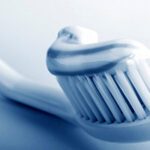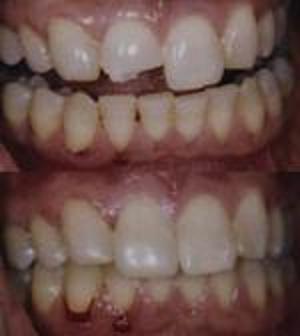I had a tooth pulled on Saturday. The procedure was so smooth it was over before I knew it, so I felt lucky, since the previous one had been a nightmare. I followed all of the dentist’s recommendations to the letter: no smoking (I don’t smoke, so that one was easy), no spitting (gross! easy!), no alcohol, and no carbonated beverages (cheated a little on that one, but don’t tell.) I stuck to soft foods like pudding and salad for the first day, and took it easy on eating foods that might cause distress, like super hot or spicy foods and potato chips. My stitches started to come out on the first day. On Monday, I finally pulled the long piece of stitch material that was dangling from the wound, and by Monday night, I had throbbing pain. Pain killers didn’t help. Trying to sleep it off didn’t help, either, and by 3 am, I was awake and miserable. I had a dry socket. I needed a cure, and I needed it fast.
Luckily, or unluckily, really, I’ve had this problem before, and I knew exactly what to do to cure a dry socket. Now, I’m going to share my magic dry socket home remedy with you. Naturally, if it’s during regular business hours, you will want to call your dentist for an appointment, since a follow up to a tooth extraction shouldn’t cost you anything. If it’s late and you’re in pain, try this dry socket home remedy now and call your dentist in the morning.
Best All Natural Dry Socket Home Remedy
You will need:
Clove Oil (or one of the options listed in step one)
Cotton Swab
Tiny piece of sterile gauze (about .5 cm x 2 cm) (If you don’t have any, a napkin will do in a pinch)
Step One: If you don’t already have clove oil in your house, you have three options:
A) Mix a teaspoon of clove powder with enough oil for form a paste. You can use olive oil, vegetable oil, or whatever cooking oil you have on hand. Don’t use motor oil. Ew.
B) Grind some whole cloves into a powder using a mortar and pestle, a food processor, or even a hammer. Follow the procedure for step A.
or
C) Head out to your local 24-hour pharmacy, like Walgreens or CVS, and look for a toothache relief kit. You might be able to buy regular clove oil from the pharmacy, but if not, the $7 or so you spend on the little kit will be so worth it.
If you have clove oil, make sure it’s the essential oil, not a fragrance oil blend. If you didn’t buy it in a pharmacy or a natural foods store, you might want to get the dental kit and/or mix up a dry socket home remedy paste, just to be safe.
Step Two: Prepare a salt water rinse
Mix 1 cup of very warm water (but not hot!) with 1 t. table salt. Stir well to blend. Now, rinse your entire mouth vigorously, particularly near the extraction site. The goal of this is to both sterilize your mouth and to remove any food particles that may have gotten stuck in the hole left by the tooth pulling. Those food particles are often what causes the pain. Let the water dribble out your mouth into the sink (remember, no spitting) and repeat several times. You might want to end with a quick rinse with an antibacterial mouthwash, like Listerine, but it’s not strictly necessary.
Step Three: Wash your hands
Sounds silly, but it’s essential. You don’t want to introduce any new germs into your mouth.
Step Four: Apply the clove oil
If you have clove oil or the dental kit, apply a few drops to the end of a cotton swab and gently apply to the wound area. I rubbed a little on the gums of the surrounding teeth. The clove oil does sting a bit, and it tastes nasty, but it works, so deal with it as best you can. Use your mixed oil or paste the same way.
Step Five: Pack the socket
Okay, this step is really for you if the fourth step doesn’t provide relief. I recommend waiting about 15 minutes before trying this step, as the clove oil does take some time to kick in. I actually held the clove cotton swab in place for 15 minutes or so, and found that I had relief so I didn’t need to pack my dry socket. You might need to, so here’s how to do it.
Take the tiny strip of gauze. Wet it with warm water and remove excess moisture. Add a drop or two of the clove oil, scrunch up into a ball. Use the clove cotton swab and press the gauze into the extraction hole. This will hurt, but you will soon have relief. If you are feeling squeamish about pressing the gauze into the wound, just press it up against the wound and hold it into place the best you can. It’s really better if you pack the dry socket, in terms of relief, even if it hurts at first.
If you go to the dentist, this is exactly what s/he would do for you (well, it’s possible that the dentist would skip this and just prescribe more pills, but who wants that?). You don’t want to leave the gauze in the wound for the whole day, since it will take longer to heal if it’s packed, but you might want to leave it for an hour, remove it, and reapply later when/if the pain comes back. Call your dentist for a follow up as soon as you can, since you want to make sure there’s not more to the problem, like an infection or abscess.




